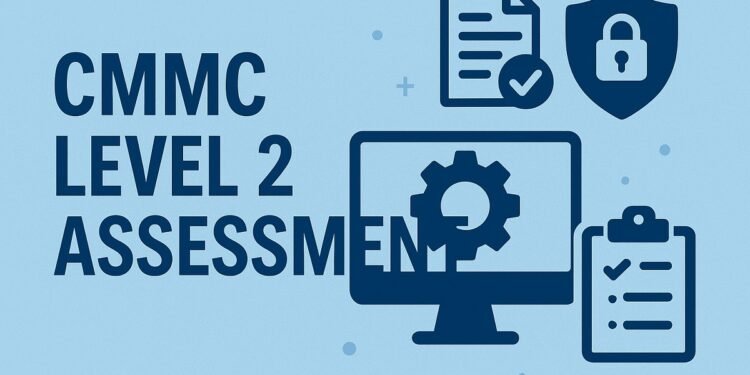No one said compliance had to be dry. For defense contractors in the thick of DoD requirements, understanding the moving parts of a CMMC Level 2 Certification Assessment can make the difference between a smooth pass or an exhausting redo. It’s not just a checklist—it’s a series of deeply technical steps, each playing a role in proving your security maturity. If you’re working through a CMMC assessment guide or working with CMMC consulting partners, here’s what each stage really means beneath the surface.
Completing the SSP Completeness Walkthrough
The System Security Plan (SSP) isn’t just a binder full of policies—it’s the story of your environment. This walkthrough is your first chance to prove that you’ve built your security architecture with intention. The assessors want to see a current, fully mapped-out plan that aligns with NIST 800-171 controls, with system boundaries, responsibilities, and control assignments that make sense based on your environment. That means showing how each asset, from endpoints to cloud infrastructure, fits into the puzzle and how protections are applied across the board.
Going beyond the document, assessors will check whether what’s in your SSP holds up to your technical implementation. They’ll cross-reference the documented controls with what they see in practice. If your SSP says multi-factor authentication is enforced, but your cloud service only uses passwords, that disconnect can cause trouble. The walkthrough must reflect an honest and accurate snapshot of what you’ve built—no copy-pasting from templates if you’re serious about passing your CMMC Level 2 Assessment.
Substantiating Control Implementation with Evidence Packages
Anyone can say they follow a security control, but substantiating it with proof is where the real work lives. Evidence packages are built from logs, screenshots, audit trails, system conNo one said compliance had to be dry. For defense contractors in the thick of DoD requirements, understanding the moving parts of a CMMC Level 2 Certification Assessment can make the difference between a smooth pass or an exhausting redo. It’s not just a checklist—it’s a series of deeply technical steps, each playing a role in proving your security maturity. If you’re working through a CMMC assessment guide or working with CMMC consulting partners, here’s what each stage really means beneath the surface.
Completing the SSP Completeness Walkthrough
The System Security Plan (SSP) isn’t just a binder full of policies—it’s the story of your environment. This walkthrough is your first chance to prove that you’ve built your security architecture with intention. The assessors want to see a current, fully mapped-out plan that aligns with NIST 800-171 controls, with system boundaries, responsibilities, and control assignments that make sense based on your environment. That means showing how each asset, from endpoints to cloud infrastructure, fits into the puzzle and how protections are applied across the board.
Going beyond the document, assessors will check whether what’s in your SSP holds up to your technical implementation. They’ll cross-reference the documented controls with what they see in practice. If your SSP says multi-factor authentication is enforced, but your cloud service only uses passwords, that disconnect can cause trouble. The walkthrough must reflect an honest and accurate snapshot of what you’ve built—no copy-pasting from templates if you’re serious about passing your CMMC Level 2 Assessment.
Substantiating Control Implementation with Evidence Packages
Anyone can say they follow a security control, but substantiating it with proof is where the real work lives. Evidence packages are built from logs, screenshots, audit trails, system configs, training records, and ticketing history. This is the body of documentation that proves each control in your CMMC Level 2 Certification Assessment is not just in place—but operating effectively and consistently.
A strong evidence package doesn’t just include a single screenshot of a firewall rule. It shows that rules are monitored, updated, and aligned with policy. The goal is to show ongoing compliance, not just point-in-time readiness. If you’re working with a CMMC consulting team, they’ll often coach you on how to present this evidence in a way that matches assessor expectations. It’s part forensic documentation, part storytelling—and it has to be airtight.
Validating CUI Flow Diagrams Against Operational Systems
Controlled Unclassified Information (CUI) doesn’t stay still. Mapping how it flows through your network is one of the most underrated steps in the CMMC assessment guide. It’s not just about drawing a few boxes and arrows. Assessors want to see that the diagram reflects actual behavior—how CUI enters, moves through, and exits your system, including where it’s stored, processed, and transmitted.
You’ll need to align the flow diagrams with system logs, firewall rules, encryption configurations, and endpoint monitoring. If there’s a mismatch between the diagram and real-world system behavior, that’s a red flag. This step helps define the scope of your CMMC Level 2 Assessment, so missing this can have a ripple effect. Clear, validated flow diagrams also help identify whether CUI is inadvertently stored in unauthorized locations or exposed to risk you haven’t mitigated.
Internal Audit Results Feeding into POA&M Updates
Before the assessor gets involved, your internal audit should flag anything that needs tightening. The findings here are like breadcrumbs, leading directly into your Plan of Action and Milestones (POA&M). This living document outlines what still needs attention and when it’ll be addressed. It’s a transparent, accountable way to track ongoing progress and show assessors you’re proactive about compliance.
Internal audits can also signal maturity in your overall program. Rather than waiting for an external party to tell you what’s wrong, you’re demonstrating ownership. When updates to the POA&M come from real, tested internal audits, assessors tend to take notice. Your CMMC Certification Assessment isn’t just about hitting the marks—it’s about proving your organization has the processes in place to stay compliant as threats evolve.
Formal Interviews Confirming Control Adherence
Interviews aren’t just check-ins—they’re where control adherence gets real. Assessors talk to system administrators, security leads, and even end users to validate what’s been documented. They’ll ask direct questions: Who approves access requests? How do you monitor unauthorized changes? What happens during onboarding and offboarding? The goal is to confirm that procedures exist not just on paper, but in muscle memory.
These interviews often reveal gaps that documentation alone can’t catch. A written policy may say quarterly user reviews happen, but if your IT lead can’t recall the last one, that’s a problem. Interview responses need to match what’s reflected in your SSP and evidence packages. It’s also a space to highlight strengths—organizations well-prepped through CMMC consulting tend to shine during this phase, showing depth of understanding and a culture of compliance.
Prioritizing Remediation Based on Severity Findings
Not all gaps carry equal weight. Some could lead to immediate noncompliance, while others are improvement opportunities. After interviews and system walkthroughs, findings are graded based on severity. High-severity gaps—like unencrypted CUI or unmonitored admin access—need top priority in your remediation plan. Timeframes must be realistic and defensible.
Smart teams approach this stage with triage in mind. They assign internal owners, allocate budget, and track remediation status in a centralized platform. A quality CMMC consulting partner can help align these efforts with assessor expectations, ensuring your responses are both thorough and strategic. Remediation isn’t just patchwork—it’s a demonstration of your commitment to strengthening the security posture.
Final Submission Readiness for Certification Handoff
The last stage is where all your preparation comes together. Before handing off for final certification, you’ll go through one more internal checkpoint—verifying all documentation is complete, interviews are logged, controls are active, and remediations are tracked. This is the final push to make sure nothing’s missing that could delay your CMMC Level 2 Certification Assessment results.
Submission readiness also includes formatting your package clearly and coherently for the C3PAO to review. Think of it like packaging your work for a board presentation. It needs to be logical, concise, and built to guide assessors smoothly through your system maturity. This is where professional CMMC assessment guide support can make a difference—helping defense contractors wrap up the journey with confidence and precision.figs, training records, and ticketing history. This is the body of documentation that proves each control in your CMMC Level 2 Certification Assessment is not just in place—but operating effectively and consistently.
A strong evidence package doesn’t just include a single screenshot of a firewall rule. It shows that rules are monitored, updated, and aligned with policy. The goal is to show ongoing compliance, not just point-in-time readiness. If you’re working with a CMMC consulting team, they’ll often coach you on how to present this evidence in a way that matches assessor expectations. It’s part forensic documentation, part storytelling—and it has to be airtight.
Validating CUI Flow Diagrams Against Operational Systems
Controlled Unclassified Information (CUI) doesn’t stay still. Mapping how it flows through your network is one of the most underrated steps in the CMMC assessment guide. It’s not just about drawing a few boxes and arrows. Assessors want to see that the diagram reflects actual behavior—how CUI enters, moves through, and exits your system, including where it’s stored, processed, and transmitted.
You’ll need to align the flow diagrams with system logs, firewall rules, encryption configurations, and endpoint monitoring. If there’s a mismatch between the diagram and real-world system behavior, that’s a red flag. This step helps define the scope of your CMMC Level 2 Assessment, so missing this can have a ripple effect. Clear, validated flow diagrams also help identify whether CUI is inadvertently stored in unauthorized locations or exposed to risk you haven’t mitigated.
Internal Audit Results Feeding into POA&M Updates
Before the assessor gets involved, your internal audit should flag anything that needs tightening. The findings here are like breadcrumbs, leading directly into your Plan of Action and Milestones (POA&M). This living document outlines what still needs attention and when it’ll be addressed. It’s a transparent, accountable way to track ongoing progress and show assessors you’re proactive about compliance.
Internal audits can also signal maturity in your overall program. Rather than waiting for an external party to tell you what’s wrong, you’re demonstrating ownership. When updates to the POA&M come from real, tested internal audits, assessors tend to take notice. Your CMMC Certification Assessment isn’t just about hitting the marks—it’s about proving your organization has the processes in place to stay compliant as threats evolve.
Formal Interviews Confirming Control Adherence
Interviews aren’t just check-ins—they’re where control adherence gets real. Assessors talk to system administrators, security leads, and even end users to validate what’s been documented. They’ll ask direct questions: Who approves access requests? How do you monitor unauthorized changes? What happens during onboarding and offboarding? The goal is to confirm that procedures exist not just on paper, but in muscle memory.
These interviews often reveal gaps that documentation alone can’t catch. A written policy may say quarterly user reviews happen, but if your IT lead can’t recall the last one, that’s a problem. Interview responses need to match what’s reflected in your SSP and evidence packages. It’s also a space to highlight strengths—organizations well-prepped through CMMC consulting tend to shine during this phase, showing depth of understanding and a culture of compliance.
Prioritizing Remediation Based on Severity Findings
Not all gaps carry equal weight. Some could lead to immediate noncompliance, while others are improvement opportunities. After interviews and system walkthroughs, findings are graded based on severity. High-severity gaps—like unencrypted CUI or unmonitored admin access—need top priority in your remediation plan. Timeframes must be realistic and defensible.
Smart teams approach this stage with triage in mind. They assign internal owners, allocate budget, and track remediation status in a centralized platform. A quality CMMC consulting partner can help align these efforts with assessor expectations, ensuring your responses are both thorough and strategic. Remediation isn’t just patchwork—it’s a demonstration of your commitment to strengthening the security posture.
Final Submission Readiness for Certification Handoff
The last stage is where all your preparation comes together. Before handing off for final certification, you’ll go through one more internal checkpoint—verifying all documentation is complete, interviews are logged, controls are active, and remediations are tracked. This is the final push to make sure nothing’s missing that could delay your CMMC Level 2 Certification Assessment results.
Submission readiness also includes formatting your package clearly and coherently for the C3PAO to review. Think of it like packaging your work for a board presentation. It needs to be logical, concise, and built to guide assessors smoothly through your system maturity. This is where professional CMMC assessment guide support can make a difference—helping defense contractors wrap up the journey with confidence and precision.




















